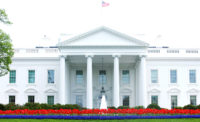Shortly after taking office in January 2017, the current administration followed up on a commitment to control regulatory costs by reducing regulation. This commitment was kept by issuing an executive order that required total costs of new regulations finalized in 2017 to be no greater than zero. The executive order also required any new incremental costs associated with new regulations be offset by the elimination of existing costs associated with at least two prior regulations. This was significant because, according to a June 29 article in Forbes magazine, “If one assumed that all costs of federal regulation and intervention flowed all the way down to households, U.S. households would ‘pay’ $14,455 annually on average in a regulatory hidden tax … That means that an average American household ‘spends’ more on embedded regulation than on health care, food, transportation, entertainment, apparel, services or savings.”
The same article points out that 2,964 rules were finalized in calendar year 2019 — the lowest number since 1970 when those records started being kept. In keeping with the 2017 executive order to control regulatory costs, of the 3,752 regulatory actions in the current pipeline, 689 are deregulatory and 192 have annual economic effects of $100 million or more, which define them as “economically significant.”
For months, there has been speculation about the ramifications of a potential change in administrations regarding the regulatory impact it will have on the poultry, egg and meat industries and subsequently on American households. For example, a simple signature can reverse the executive order requiring the control of regulatory costs on the public and any regulation in the pipeline not yet finalized, including deregulatory regulations that can be pulled out of the process. While it is more difficult, even recently finalized rules can be nullified by employing the Congressional Review Act (CRA) to pass a joint resolution that rejects the regulation. But the “reach-back” window to utilize the CRA is limited to 60 days of Congress’s final adjournment.
The animal agriculture industry saw this scenario occur when the Obama administration repealed an exemption for reporting the emission of ammonia generated from the natural breakdown of manure into the air, finalized during the last few days of the Bush administration. The Bush administration’s Environmental Protection Agency (EPA) recognized this reporting requirement — required by the Comprehensive Environmental Response, Compensation, and Liability Act (CERCLA) — was not meaningful and did nothing to support the responsibilities of the National Response Commission. Fortunately, Congress restored this reporting exemption in 2018 by passing the Fair Agricultural Reporting Method Act (FARM Act). However, at risk with a change in the present administration is a nearly identical reporting exemption EPA finalized in June 2019 for reporting requirements, outlined in Section 304 of the Emergency Planning and Community Right-to-Know Act (EPCRA).
Another notable regulation that might be ripe for repeal with the incoming administration is the Navigable Waters Protection Rule (NWPR), which defines those waters that are jurisdictional under the Clean Water Act. The NWPR was finalized in response to the prior administration’s regulatory over-reach in the Clean Water Rule. Although the “reach back” window for the NWPR is closed, it could be repealed through a full rule-making process. The NWPR is further jeopardized by several lawsuits challenging its legitimacy. If any one of those lawsuits invalidates it, the Obama administration’s Clean Water Rule could be reinstated. While the Clean Water Rule was found to be unlawful, the court did not vacate it. Instead, the court remanded the rule back to EPA for revision.
Instinctively, it is clear. The regulatory implications of an administrative change are indeed considerable. NP




Report Abusive Comment